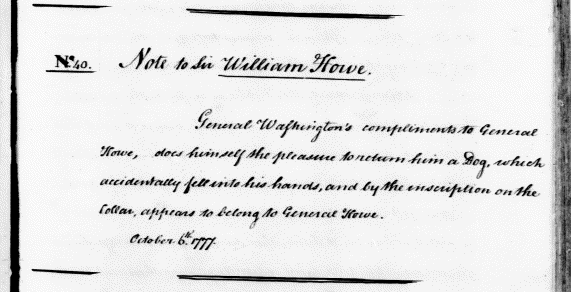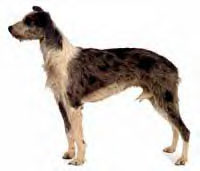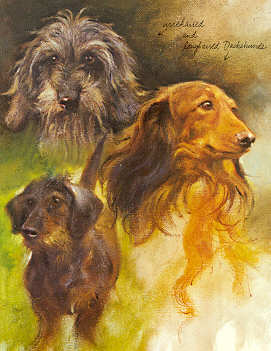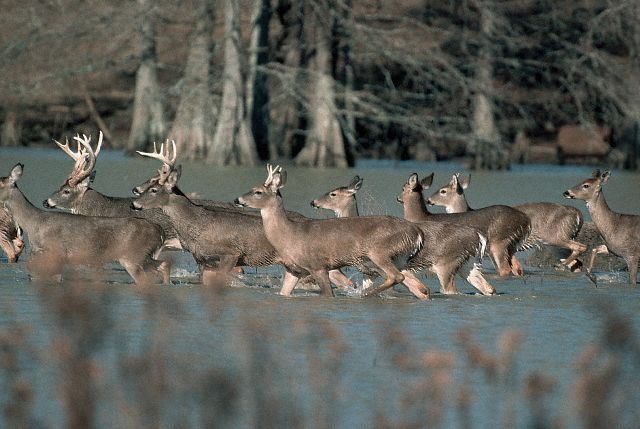 Washington Post, December 12, 2004
Washington Post, December 12, 2004
So Many Deer, So Much DevelopmentIn Game-Rich Loudoun, It's Getting Harder to Find a Safe Place to HuntBy Brigid Schulte
The dawn is still, a faint brightening just above the dried husks of a Purcellville cornfield, the moon still bright. Jay McKeever freezes and slowly inches down into a squat. A white-tailed buck emerges from a thicket of bare trees, the "big boy" he has tracked all morning.
The buck, colorblind to the blaze orange baseball cap McKeever wears, comes to a halt. It would be a perfect shot -- and a rack of antlers worth mounting. McKeever curses quietly, his Browning .270-caliber deer hunting rifle, with scope, untouched on the frozen ground next to him. The buck startles and bounds back into the woods. "I could have shot, but I don't know where the bullet will go," he whispers. "It could hit a bone and deflect."
These days in Loudoun County, a ricochet could be deadly. The plastic-tipped rifle bullet McKeever uses can keep going after it passes through a deer and travel up to a mile if he misses. And though they are invisible beyond a rise at the edge of the field, a Christmas tree farm and a new development of $700,000-plus homes sit in his line of fire. Some of the yards have brightly colored slides and jungle gyms.
Hunting in the shadow of mansions, McKeever says, is "like a head-on collision. There's just no place to let a rifle bullet loose around here that's not going to wind up getting in trouble."
McKeever lives in the fastest-growing town in the fastest-growing county in the nation. The number of residents has grown 31 percent in three years. He is also smack in the heart of deer country. Not only does Loudoun have more deer per square mile than any other county in the state, but hunters also routinely kill more deer in Loudoun than almost anywhere else in Virginia, nearly 8,000 in 2003 -- and they're hoping for more this year.
Lately, the talk among hunters at the 7-Eleven coffeepots has been about the explosive story out of Wisconsin, where a Hmong hunter who had been on someone else's deer stand on someone else's land shot and killed six hunters. They say the man was a criminal, not a hunter. They fear that the story will give hunters a black eye and embolden hunting opponents to push for more restrictions. But they acknowledge that some of the same pressure that drove Chai Vang to trespass on private property -- the loss of hunting ground to development -- is being felt in Loudoun in spades.
Some longtime Loudoun hunters have simply given it up or gone farther south and west. Others who have seen their hunting grounds turned into townhouses or mansions find other landowners and offer to mend fences, chop wood or pay thousands of dollars for the right to hunt. McKeever has had to seek permission to hunt new land eight times in recent years because developers have put up what he calls "Zactlies" -- homes that all look exactly alike -- on his hunting spots.
Perhaps more disturbingly, hunters and landowners report that the squeeze on hunting land has led to more poaching, trespassing and "spotlighting" -- hunting deer from the road with lights -- all of which are not only illegal, but also potentially deadly.
The trespassing has led to some harsh words between hunters. "But we haven't come to fisticuffs that I know of yet," McKeever said.
Still, what really worries McKeever, who spends months scouting the land between mansions and knows every inch of it and what houses lie beyond it, are the hunters who don't and shoot anyway. The margin for error simply doesn't exist anymore. "All it takes is one accident," said Mark Duda, a consultant who tracks public attitudes toward hunting with Responsive Management in southwestern Virginia.
Ken Fleming, a former law enforcement officer, owns or manages several thousand acres for hunting in Loudoun, where he allows only 12 carefully vetted people to hunt. But this year, for the first time, his phone is ringing off the hook with people asking if they can hunt. And he is hearing shots and finding carcasses that he knows are not his hunters'.
"There's always been somebody that'll break the law, always will be. But we're seeing more of it because even they're being pushed into a tighter area," Fleming said. "Unfortunately, the loss of land has brought in some very unethical persons and situations. It's gotten really out of control."
About 7:30 a.m. on a recent Thursday, the portly, fleece-clad McKeever, 51, a former rodeo rider and scuba diver and now a sheriff's deputy and goose hunting outfitter, lies flat in the cornfield north of Purcellville. A couple of doe have just popped up the bank from a streambed across the field. He has seen about 20 deer since 5:30 a.m., but he didn't shoot for fear that the angle would carry a bullet too close to a house, a tennis court, the road.
"That's a good freezer deer right there," he says.
He holds his breath, steadies his rifle and shoots. The report is deafening, a POW that echoed in the chill morning. A flock of Canada geese, ruffling and honking, flap into the sky. The shot misses, his first miss in 10 years, he says. This is the first year McKeever has hunted this cornfield. The land is owned by a speculator and farmed by a friend who leases hunting rights to him and two buddies. It could be sold at any moment. It is hardly ideal.
McKeever has learned that when the construction workers arrive across the road to the west about 8 a.m. on weekdays, they flush the deer out and send them his way. But if he can't get a shot in the early morning, he likes to wait until the people in the homes across Allder School Road to the north have gone to work. He hates it when he's in camouflage, high in his tree stand in a cherry tree, having taken care to put fox urine on his boots to mask his scent, and hears a man kiss his wife goodbye, call to his dog and drive down his driveway to work.
"You just don't feel like you're in the woods," he says.
In Loudoun, as in so many suburbanizing areas, there is a strange symbiosis between deer and development. For centuries, the white-tailed deer were plentiful in Virginia. But by 1910, they had all but disappeared. In the 1930s, the state began to regulate hunting, shortening the season and prohibiting anyone from shooting a doe. In the 1959 season, 70 deer were taken. But over time, as the deer's natural predators died out, their numbers began to swell. Now, there are an estimated 1 million deer in Virginia, and hunters killed 237,000 last year alone. "A healthy, adult doe may produce two fawns, sometimes three in a season. Unhunted or protected, a herd can double in size every four to five years," said Dan Lovelace, a wildlife biologist with the Department of Game and Inland Fisheries. "That's what we've seen. It's been pretty exponential."
State law now encourages Loudoun hunters to shoot the once-protected doe, as many as two a day during the three-month season if a hunter buys $12.50 bonus tags. "Loudoun keeps setting records for numbers of deer killed," Lovelace said. "And it's still not enough."
The more houses that go up, the more havens are created. Lovelace said deer have become so well-adapted to suburban environments, munching on golf course and soccer field greens, that they thrive in small thickets and along streambeds between subdivisions. Hunters say that in Fairfax County, deer have become so accustomed to human ways that they don't really become active until after the morning rush hour.
All of that leads to another strange phenomenon McKeever is noticing: With more development, more refuges and fewer places to hunt, he has seen world-class "monster" bucks like those that people pay thousands of dollars to hunt in places like Alaska and Canada. And that brings more hunters in, legally or not, responsible or not. He recalled the guys he saw last year on a piece of property that was about to be developed. They were there legally, as buddies of a project manager. But they didn't know what they were doing, he said.
McKeever worries that such "yahoos and slobosauruses" will only fuel anti-hunting sentiments among newcomers in Loudoun. "Ten guys who know nothing about the property shooting high-powered rifles right in the back of these huge homes . . ." he said, shaking his head.
Suburban Ambivalence Attitudes in Loudoun have followed a fairly predictable pattern, Duda said. First, suburban newcomers who have never hunted fall in love with the deer and their big brown eyes and don't want to see them killed. They fear for their families' safety when they hear gunshots near their homes.
In Loudoun, this phase culminated in 2000, when newcomers pushed for new hunting restrictions. Now, hunters must be 100 yards from a main road or an occupied house. They may use rifles only in western Loudoun. East of Route 15, hunters may hunt only with shorter-range shotguns or bows and arrows.
In the next phase, Duda said, after even the most vocal anti-hunting advocates have tired of having their hostas and azaleas eaten to nubs, many newcomers begin to see the need for controlling the deer population and grudgingly begin to accept the hunters. Game Warden Bruce Lemmert, who still is inundated with calls complaining about gunshots in hunting season, marks Loudoun's turning point about four years ago, when a young woman died after hitting a deer while driving to work. Laura Dove, who moved to Purcellville 10 years ago, is a case in point. Active in the movement to restrict hunting four years ago, she has come to a truce. She admits to still being "freaked out" at seeing hunters in orange blaze just across her driveway and doesn't understand the guy who puts photos of his kill up on the bulletin board at the gym. But she has narrowly missed hitting deer so many times that she knows there are too many of them.
"The deer are a public danger. Yet you can't have people walking around on two acres shooting deer. It's very confusing. It seems like a huge culture clash," she said. "But until someone actually dies or gets hurt, I really don't see how things will change."
Feeling Exposed McKeever walks through a patch of trees to search for the doe he shot at, just in case. He stands in full view of the large homes across the road.
"Right now, I feel like I'm walking down the street naked, with those people looking out their windows and thinking I'm an idiot," he says, reddening. "This blaze orange is like a neon sign saying, 'Deer Hunter, Deer Hunter, Deer Hunter.' They're afraid of the high-powered rifle."
He stops, musing on the unease in the shrinking woods, and repeating as if for reassurance the gun owner's mantra: "It's only as safe as the person carrying it."



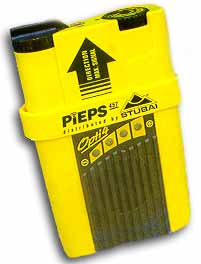
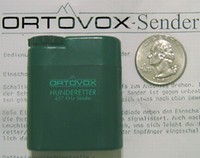

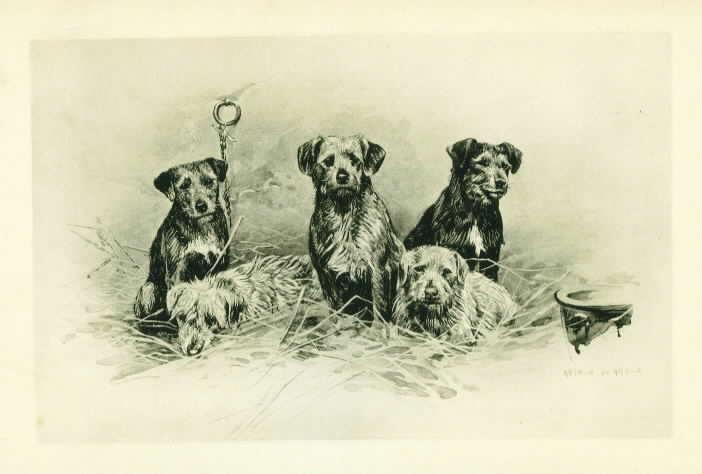


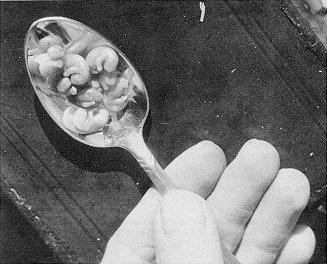
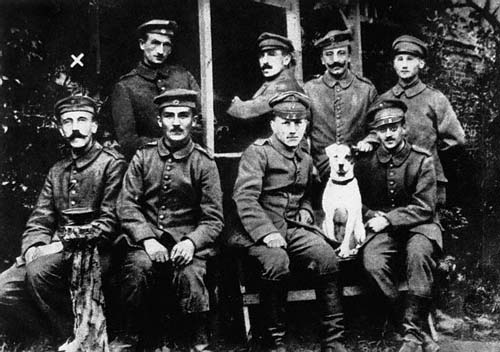

 .
.  .
. 
